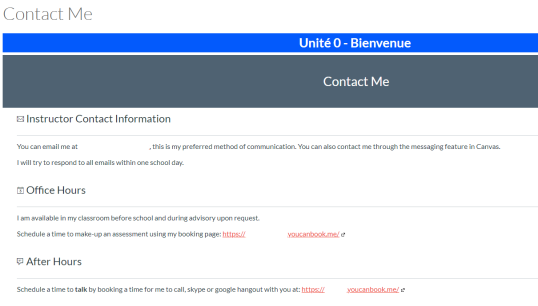As schools in Illinois face the idea of a shutdown, we’re scrambling to figure out what we can do to ramp up to distance or eLearning.
I have a few recommendations from my experience teaching online. After sleeping on it last night, I also have a few suggestions for how to handle Paraprofessionals and maybe some IEP minutes.
Probably our two big hurdles that students face:

My suggestions
K.I.S.S. for eLearning
- Distance and eLearning can be simple and should be simple. It doesn’t mean bells and whistles.
- A teacher could run their whole course via email, google classroom, canvas, packets, or just videos posted on a website. There’s a lot of choice. But it does need to be communicated.
- Teachers must consider that students will be doing work for other courses, and potentially work they’re unfamiliar with. So the time they expect students to do work should keep that in mind.
- Can performance-based courses look at alternative ways to meet standards? Instead of working a lathe, can students watch industry videos about products, processes, etc? This takes more creativity, but this sort of work would ultimately help those students who are in In-school suspension or homebound.
Set office hours and publish how to get in contact

- Create and publicize a “Contact Me” area that allows students and parents to know how you prefer to be contacted.
- Include office hours:
- When are you available to answer questions?
- If you have a syllabus, update it and send it out, share it on your student information system.
- If using Google Classroom or another Learning Management System (LMS), make a devoted page to “Contact Me” and make it prominent so students can find it.
- Publish how long you will take to get a response back to students and parents – 24-48 hours?
- Publish how long you will take to get feedback on work.
Google Voice Accounts
- That way teachers and paras can contact students without using their normal phone numbers.
- How to use:
- You can text or call from these accounts
- It acts as a normal phone number
- There’s an app, or you can use your Chromebook or computer
Contact students early and often
- If students are going to be successful, they need to have a “teacher presence” which includes checkups. I called all my online students personally after my first year because they were more invested and “knew” me.
- Frequent emails or announcements are helpful. This helps with “presence”.
- Feedback is posted within a particular deadline and communicated through the syllabus information.
- If you’re in an administrative position, here’s where Paraprofessionals come in. For the SPED population, there is going to be a lot more help that is needed. Just like a classroom, they’re needed to support student success. I suggest that they are included in the student contact as well. Working with students to guide them through the content and help them with issues. They’ll need access to Google Hangouts or Skype as well to work with students.
Google Hangouts
- This would be a way for teachers and paraprofessionals to help students. You can screen share and have many people in the “hangout” at the same time for synchronous meetings.
- This is how we support remediation and questions. Teaching online, we purchased Adobe Connect for the same purpose, but I frequently used Hangouts with students.
Set a “pacing guide”
- This answers “What do I do today?”
- Just like you lesson plan, you should have a clear schedule to let students know what they should be doing each day they’re away.
- Can include a day-by-day schedule
- this is best for chunking and supports all students
- can be used with a packet situation as well as online
- can be published in print, put up daily as announcements or email, or placed in the course where students will see it
- If you’re in an administrative position, give a choice for how teachers communicate what students should do each day. This will probably will be part of your attendance policy anyway.
- Examples:
- Day-by-day calendar for reading a book
- Dates and assignments listed
What do I do if I’m stuck and need help?
- Make something for students to be able to continue to work if they can’t get a hold of you right away.
- Helpful links to check, websites with video, or even each lesson has a “what do I do if I’m stuck?” option.
- Encourage teachers to publish this in their syllabus or online course. This is for when a student is working through things and cannot get help immediately.
Let me know if you’d like ideas and would like to chat about anything!

